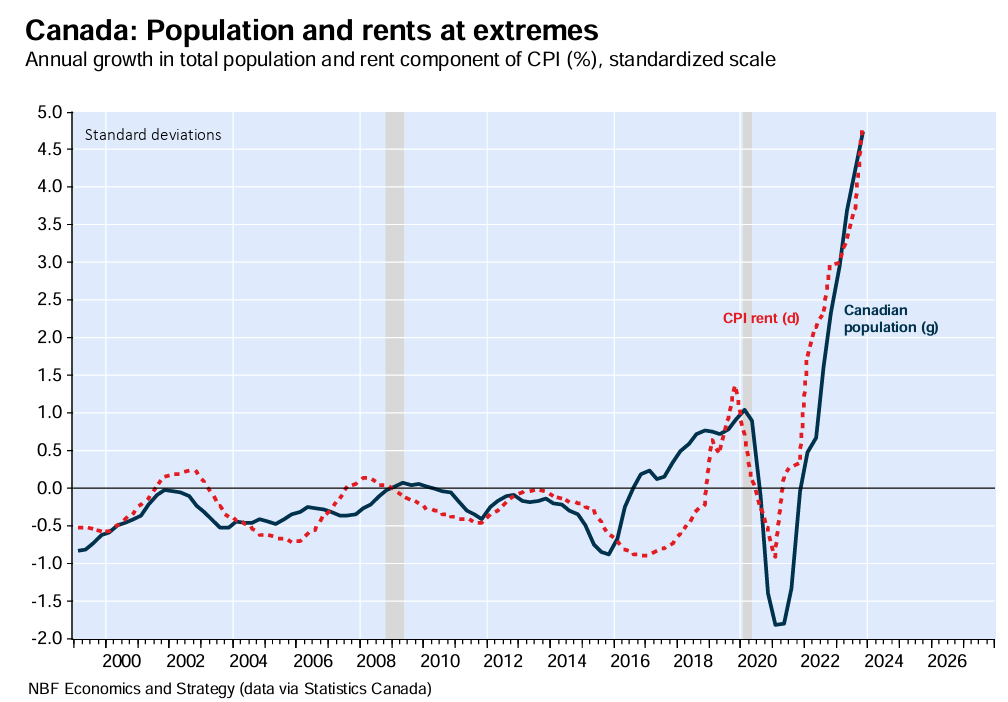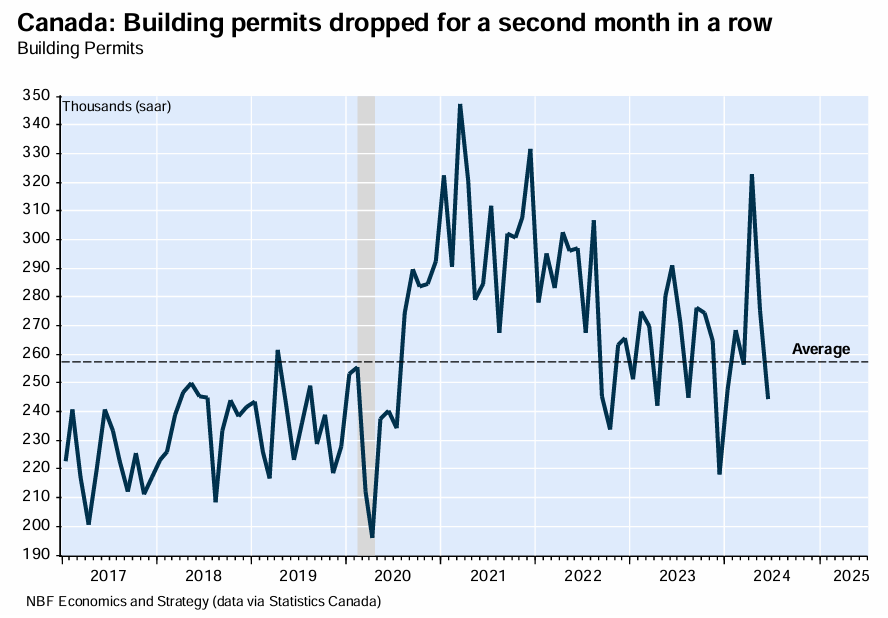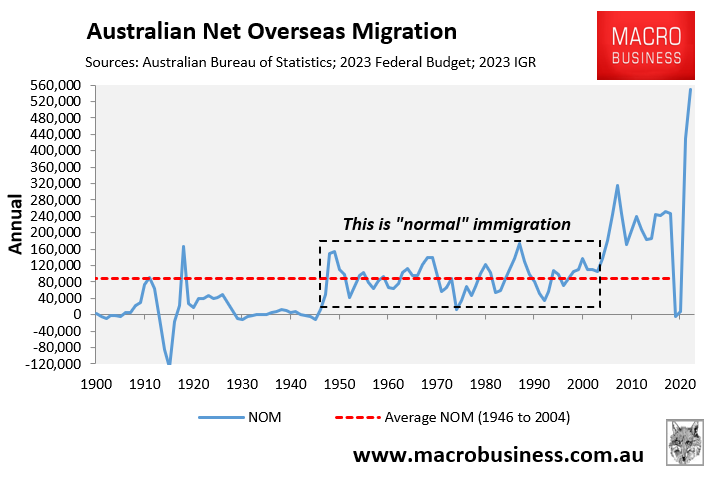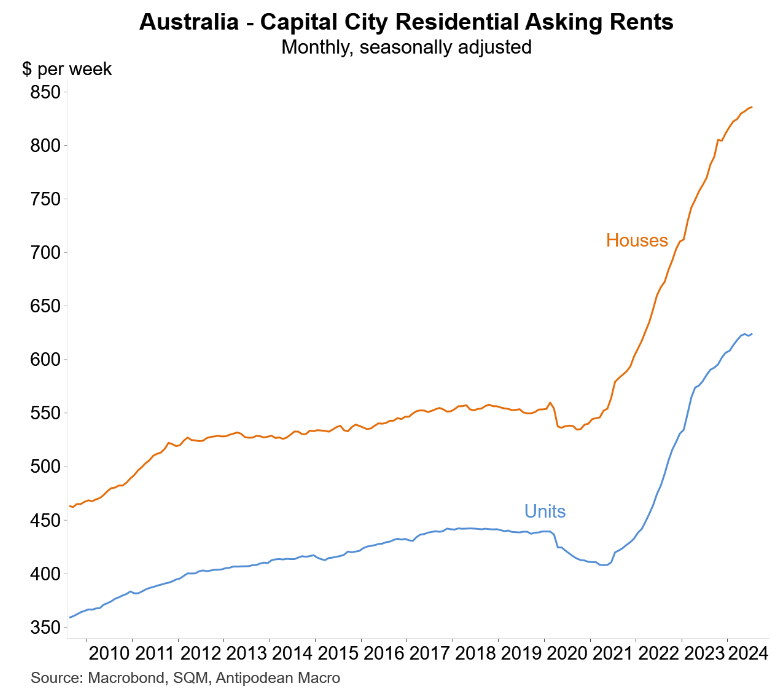According to Statistics Canada, the country’s population increased by a record 1,273,000 people in the year ending March 2024, representing a growth rate of 3.2%.

Net overseas migration accounted for 97% of Canada’s population growth.
This surge in population was unplanned, easily beating Statistics Canada’s 2022 “median-growth” projection by 1.4 million people:

The National Bank of Canada described the population figures as a “demographic heat dome”, with “atmospheric temperatures dialled up to downright dangerous levels”.
“You won’t find a larger four-quarter increase in Canada’s population”.
“That’s an unprecedented rate of increase, adding much strain to an undersupplied housing stock to say nothing of other ‘system’ pressures, including on assorted public infrastructure”, the Bank’s economists warned.
The impact on Canada’s rental market has been severe.
The spike in immigration has driven a record shortage of housing relative to demand:

As a result, Canadian rental vacancy rates have collapsed, driving rental inflation into the stratosphere:

Although the Canadian Trudeau Government has promised to curb immigration, including by capping international student numbers, the housing situation remains fraught.
Building permits data released last week by Statistics Canada showed that permits fell 4.9% below their historical average following significant back-to-back declines:

“This month’s data suggest that the current housing crisis being driven by strong population growth and lagging supply will not be resolved anytime soon”, National Bank of Canada economists warned.
A similar process is playing out in Australia.
The Albanese government’s first federal budget in October 2022 projected that 470,000 net overseas migrants would land in Australia over the government’s first two years:

Source: October 2022 Federal Budget
Instead, around one million net migrants arrived in those two years, meaning an extra half a million people have required accommodation.

At the same time as Australia’s population has surged, actual dwelling construction has collapsed to around decade lows:

This has created a record imbalance between housing demand and supply, driving rental vacancy rates to historical lows and pushing rental inflation through the roof:

The bottom line is that Canada and Australia will continue to experience chronic housing shortages as long as both nations persist in running high immigration policies.
The volume of immigration in both countries has been unprecedented and swamped their respective economies’ supply side.
The solution to the rental crises of both nations is to run sensible immigration programs commensurate with their ability to supply housing and infrastructure.
Otherwise, housing will forever remain undersupplied, which will push rents higher and force more Canadians and Australians into financial stress, shared housing, and homelessness.

